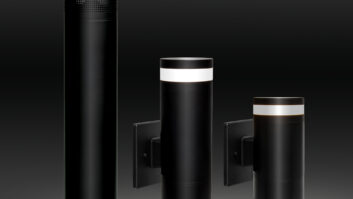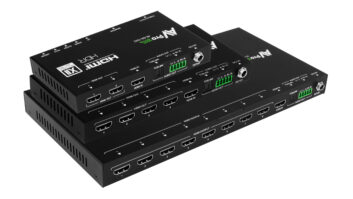When the robot overlords take over and finish thoroughly examining each bit of the yottabytes of accumulated data that make up the entire collected history of human culture—sadly a process that will only take them around two seconds with their quantum logic computing power stolen from the NSA, but it will be a merciful two-second reprieve from the constant whippings and cruel task mastering—they will likely determine that the smartphone was the most powerful and disruptive technological invention us fleshpods managed to create.
According to the always-right, never-wrong internets, the phone universally hailed as one of the first smartphones to reach the Americas was the Kyocera 6035.

This landmark event happened all of 12 years ago, but when you look at how smartphones have advanced in the years since—largely due (in my opinion) to the revolutionary design of the iPhone in 2007 and the runaway success of Apple’s game-changing app store—the smartphone went on to very quickly replace, nay, kill off many other technologies along the way. Much like a self-aware, perfectly evolving digital Swiss Army knife, the smartphone can absorb the role of many other standalone devices and become whatever its users need it to be. And just you wait until the robots start probing you with your new even-larger Galaxy! Oh, you’ll wish you’d bought the smaller, thinner iPhone then, iPromise!
Here’s a list of some technologies that have been or are being ground out of existence under the cruel jackboot of the smartphone’s domination.
Other Phones
Remember when you used to have to drive to a gas station to try and find a payphone to use? Or how you would play that fun game of “will it, won’t it?!” on whether the phonebook would still be there chained to the phone by that metal umbilical and be a) intact b) there but mutilated c) completely obliterated/missing or d) soaked in hobo urine.

The smartphone has killed the public payphone. Dead. Gone, poof like Keyser Soze. It is also rapidly killing the home phone, as people start asking themselves, “Wait…I’m paying the phone company how much each month to have this phone that I don’t even use any more?!” Goodbye, communal phones, with your weird smelling mouth and earpieces! I can’t say anyone will truly miss you. Well, maybe Banksy.
Address/Phone Book

I bet your mom has a quaint address book, probably with some whimsical farmhouse picture or Norman Rockwell painting on the cover that she keeps in a drawer in the kitchen next to the phone crammed with pens and sticky notes and other geegaws. Many addresses are scratched out and rewritten over and over as people move or, umm, die.
Bet who probably doesn’t have an actual, physical address book? Anyone reading this. We use the contacts in our phones. Because it updates addresses way faster along with storing social media profiles, e-mail addresses, fun facts like, “Has a weird obsession with hard cheeses” and the like. Plus, a digital contact is as easy to share as tap-click-share and can import new information just as quickly.
Calculator
Back in high school, one of my math teachers required that we all bought these really expense TI graphing calculators. I’m not sure I ever really figured out how to use the thing. Today, I could get way more functionality out of a $1.99 app on my phone. (Granted, I still wouldn’t know how to use it.) The standalone big-button calculator that many people kept in desk drawers has also been gobbled up by the calculator included in the phone or by the one that I have pinned to my desktop’s start window.
Wristwatch
The wristwatch is almost like a modern-day, instant generation gap determiner. If you are over, say, mid-30s, then you likely grew up wearing a watch, and probably still wear a watch. (And if you owned a Casio calculator watch, then that strange sensation you just felt was you and I bro-hugging it out…)

If you are under mid-30s, then you likely just check your phone. Watches have now evolved beyond the mere mundaneness of serving their primary purpose of telling time, and have transformed into jewelry/fashion accessories or lifestyle statement pieces. Oh, sure, they still tell time, just not as accurately as a constantly internet-updating smartphone, but no one actually looks at their wrist to check the time! That would be the ultimate loss of street cred. (Though, my dive watch challenges your smartphone to a, “What time is it now?” challenge at, say, one meter down.)
GPS
Say what you will about Apple Maps, but it has never steered me 1/10 as wrong as my Magellan GPS unit does on a daily basis. I swear, I think the Magellan actively tries to sabotage me, choosing detours that may save several feet of driving distance but add long minutes of driving time. Or by plotting routes with the primary subroutine of “travel through every small town, specifically with scary looking out-in-the-middle-of-nowhere chainsaw-killing-shacks whenever possible.” Also, the standalone GPS unit wants to charge me like $100+ to update its woefully out of date map software. The standalone GPS market has been decimated by the smartphone which includes a way better, constantly updating version of the same thing for free. Suck it, Magellan. Suck it long, su— (rerouting…)
Actual Maps
Part of a delivery crew’s kit used to be the venerable Thomas Brothers Guide. But the brothers have been put out of business. Along with standalone GPS units, people are no longer using those big, refolds-like-a-Mensa-puzzle paper maps. Our glove box used to be filled with regional maps, state maps, and local maps. Now it’s filled with napkins and pens and bottles of hand sanitizer. Granted, I’m not going to try and summit Cho Oyu using my phone as a digital Sherpa, but for general land navigation, the maps I can pull up in my phone win the day and refold with one simple button press.
Alarm Clocks
Whenever I had to wake up for something, and I mean absolutely, positively, no BS, really-really had to wake-up for something, I would always lie in bed with this quiet unable-to-truly-sleep terror that there would be a power failure or something, and the alarm clock would fail and I’d wake up an hour late to the dreaded blinking 12:00.

Or when I’m traveling and in a hotel room, I had this pre-bed routine where I would put the alarm through “practice sessions” where I made sure that I a) set it correctly b) didn’t screw up the am/pm bit c) it isn’t set to a station that is going to play static and d) it actually turns on and alarms. But now, everyone I know uses the alarm in their phones. Even the impossible to wake-up, Darryl Wilkinson, uses his phone to wake-up. Granted, it is a special app that features an alarm with flashing, seizure inducing strobe lights and sounds like a malevolent robot has been unleashed that is ready to attack. Even if the power dies, the phone will almost always have enough juice to power the alarm and as a bonus I can choose what song I want to wake-up to. And setting the alarm is as simple as, “Siri, set an alarm for 7:45 am.” Granted, due to my OCD, I will usually still ask for a wake-up call. I mean, I don’t want to be the guy that oversleeps and misses his plane.
Music Player
The iPod changed the way we listen to music, and for that, we say thank you. But hardly anyone is buying dedicated music players any more. Sure, there are hot rod rigs like the Astell&Kern, the HiFiMAN and the Neil Young’s Pono (will it ever actually come out?), but those will always have a micro-percentage of the market. The vast majority of people only want to carry one device that does everything, and that means listening to music on their phones.
Camera
Remember when people would go through the airport and they’d be all, “Umm, please don’t X-ray my bag because I’m just coming back from vacation and it has all of my pictures, and I’m really worried about the film being ruined. OK? Thanks.” Then film largely went away and everyone bought new digital cameras and they were all small and cute and megapixel-ey. The one thing that improves on almost every new generation of smartphone is the camera. Better lenses, better apertures, better resolution and flash. We’re now we’re at a point that the Noka Lumia is rocking a 41-megapixel camera!

That’s insane. Granted, for real-deal, serious, pro-level photography, a standalone DSLR camera is still superior, but for the 99 percent of life that is captured in digital images, the camera in your phone is way beyond adequate. In fact, I covered the entire CEDIA EXPO this year, shooting pictures and high-def video, with nothing but my iPhone. That left extra room in my backpack to pick up additional handfuls of 500 meg USB drives.
Portable Gaming Systems
When I was growing up, I totally wanted a Game Boy. Damn that thing was cool. (I actually won one once at a CES presser, but it got stolen out of my hotel room. True story.) Now that my daughter is growing up, you want to know what she wants? To use my iPhone to play games on. While Nintendo still sells tons of its latest version of Game Boy, there are many people out there who have no need of one for the vast majority of games available on their phones. And as an added bonus, phone games are way less expensive.
Flashlight
I’m not talking about the big, 6-D-cell Maglites that you can use as a melee weapon, but the small, every day, “I need to take a closer look at something” lights. I used to carry a variety of flashlights in my toolbag for looking behind racks or navigating through attics. But the batteries always seemed to be dead when I needed them, or they broke, and now I just use the flashlight on my phone. Sure, I’m not gonna take a walk up Half Dome at night with my iPhone light, but when I need to check to see which port an HDMI cable is plugged into, my phone is always there in my pocket and has me squared-away.
Pedometer
I’ve never even used a pedometer before I got my smartphone, but apparently these are actual things that people bought and then clipped onto themselves, I guess as a way of starting conversations with, “So, Bill, guess how far I’ve walked today? No, really. Guess. Here’s a hint, the number starts with a 2.” But now when we go for walks around my neighborhood I can track exactly how far we’ve gone, as well as how long it took and then compare it to the speed runs of previous walks.
Voice Recorders
I used to go to press conferences and you’d see people holding these bad boys up, trying to capture every word, with stern glowering looks if you dare tried to crack a joke anywhere near their mic’s pick-up range.

Then, I guess they’d go home with this archival box-set of sweet press conference tapes and carefully write stuff on them like, “CES 2004, Sony Press Event – Part 1 – Blu-ray Disc!” Also, unrelated, but who doesn’t totally remember these sweet tape case holders?!?
Today, if you want to record a conversation, or, as well call it in the biz, “a presser,” you just do it on your phone. With gigs of storage available, you can record and then easily off-load and play back over and over to your heart’s delight. Plus there are also a bunch of really great external microphones that you can add if you want to, say, use your phone to make a stealthy but total sweet They Might Be Giants concert bootleg. But, why record voice only when you can also capture real-life moving video? In the high defs.
Door Openers
While not as common—yet—smart locks and smart garage doors are increasingly being controlled by smartphones, and pretty soon I imagine we’ll see the key and visor-clicker-thing replaced by the phone. We’ve already pretty much abandoned keys to get into our home, as we use the keypad on our Control4 door lock. With locks like the upcoming Goji and Kwikset Kevo that pair with a digital key in your smartphone via Bluetooth, you’ll just walk up and tap the lock to open it.
And with options like the Chamberlain CIGCWC—a sub-$100 add-on that services like 80 percent of garage door openers—you can open, close, or check the status of your garage door from anywhere in the internet-connected world.
Touchpanel Control
Prior to the iPhone, we used to sell $1,000-plus touchpanel controllers like we were the ice cream man pulling up outside of fat camp. Just start playing the calliope music and collect the money. People may not have loved these things, but they understood that they had to have them, so they ponied up. Now, the touchpanel market has been gutted by smartphone and tablet controls. And, honestly, there are very few reasons to buy a totally task-limited, $1,000-plus item when you can get one that does all of the same features and way more for like half the price. Now we are seeing the handheld remote coming under attack as well. The brand-new Harmony Ultimate Hub eliminates the remote control altogether in favor of using a smartphone. And this is a product from Harmony, who is known only for making remote controls. I’m not saying Harmony is eating their children with the Hub, but, you know, here’s some salt and pepper, guys…
As custom integrators, the upside is that while smartphones are killing off other things, they are also creating new avenues for business. People love their smartphones, and are constantly looking for new ways to utilize them. Instead of swimming against the inevitable—and just angering the future robot uber rulers—try promoting all of the things that people can use their phones for. Things like “Control your lighting!” “Use your phone to check your thermostat!” “Arm your security and control your locks from anywhere in the world!” and “Use your phone to control your music!”
These are all avenues into selling products and services that we can provide. You know, at least until the robots come.

.
John Sciacca is principal of Custom Theater and Audio in Myrtle Beach, SC.







